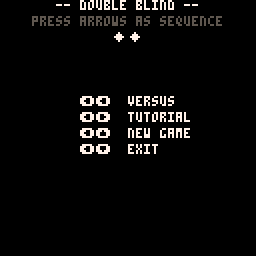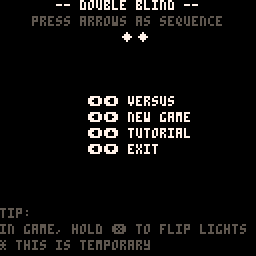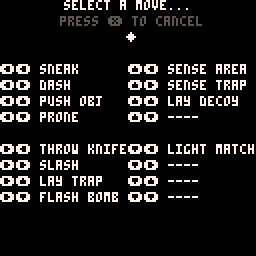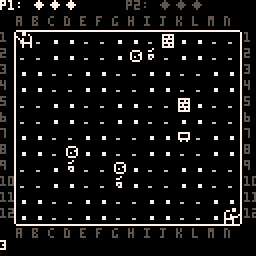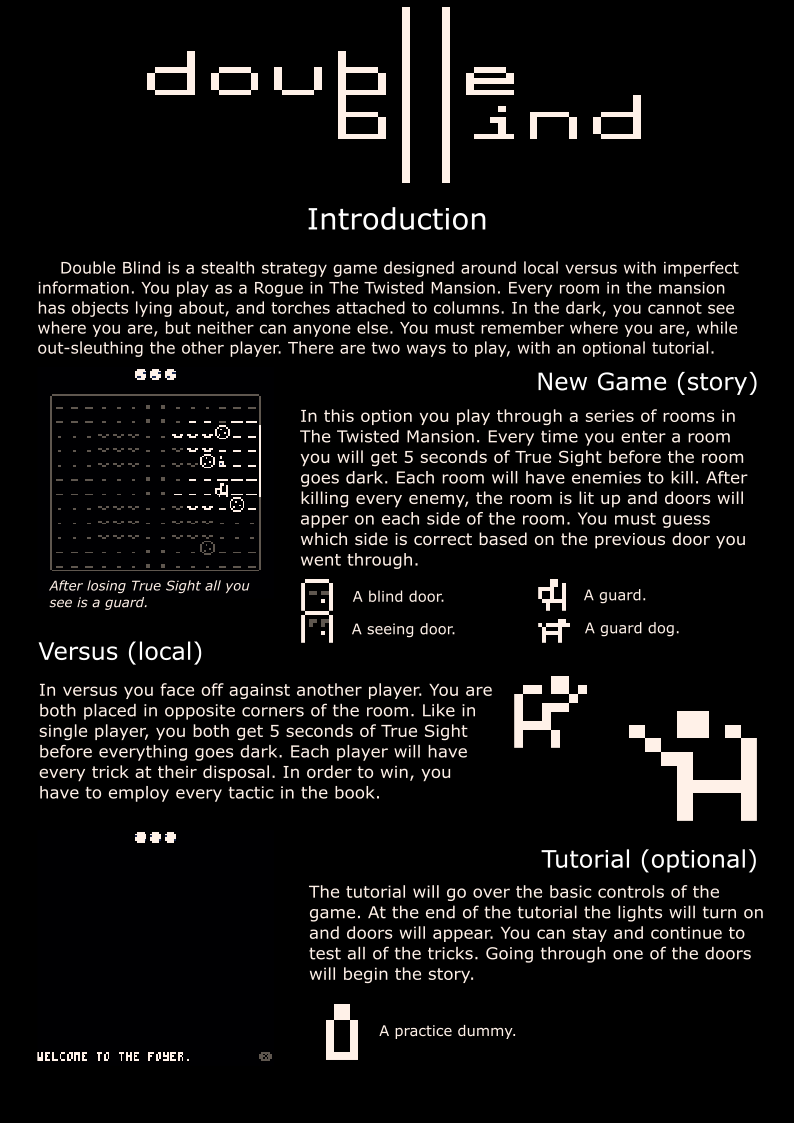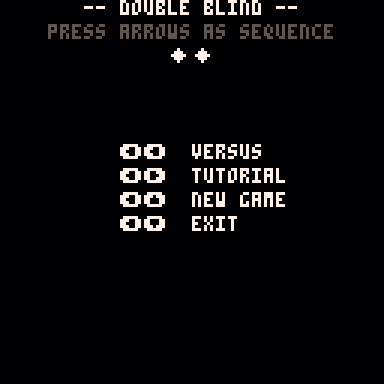
Premise
Double Blind is designed around the idea of "local versus with imperfect information." If you can imagine the playing Go Fish Battleship on a single screen everyone sees, you can understand the challenge. In Double Blind, player input is the hidden information. This can more easily be achieved via networking, but I believe keeping it local will enforce a novel feeling for the players.
In Double Blind, you play as a notorious Rogue adept at navigating the dark. When in the dark, characters are completely hidden on the screen. Players have to remember where they are based on what actions / movements they take. The Rogue has several tools at their disposal when in the dark like throwing knives and laying decoys. The goal is to find your enemies in the dark, before they find you.
Rooms
A room is where this cat and mouse game takes place. Rooms are somewhat procedurally generated. They will be of some predefined blueprint with random obstacles thrown about depending on the room type. When entering a room, you will be able to see everything for a few seconds to get your orientation.
Controls
This is where a lot of the challenge lies – I have to keep input hidden. The Rogue is controlled with four arrows: Up, Down, Left, and Right. And two buttons: O, X. The Rogue also has a currently selected move, which defaults to "Move". When using a directional key you will spend a Move Point (MP), and use it in that direction. Some move don't require a direction, so any direction will work.
In order to change your selected move, you open the move select menu with O. From there you will be presented with a menu that requires two arrow key inputs.
In-game controls:
- Up, Down, Left, Right – use current move in direction
- O – open move select (see below)
- X – undecided, thinking information menu or allowing more complex directional input
In move select menu controls:
- Up, Down, Left, Right – input sequence to select a move
- X – exit menu without selecting
Moves
Moves have feedback in the form of success/failure indications. Rogues also have 2 or more MP per turn and will see their MP drop. Some actions create noise, this noise will be displayed as a noise animation in an area with a random center on the point of origin. Loud noises will have a smaller area, quieter noises will have a larger area.
Noise levels:
- Loud – radius 0
- Normal – radius 1
- Quiet – radius 2
- Shushed – radius 3
Noises are shown graphically, in addition to an actual sound, to indicate where they are. They are fuzzy, but can give some information. A noise will have a point of origin, the noise area will be placed randomly so that part of the area is over the origin. An example with a loud noise:
X = origin, * = noise .*. *X* .*. or .*. X** .*. or .X. *** .*. etc.
And here's an example using all of the above. The Rogue moves normally one space at a time, both times a success (green indicator), selects "Dash" and runs into a pillar on the right creating noise as a red animation and a red failure indicator. Some of the colors and indicators will be polished.
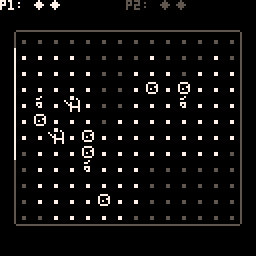
On the to-do list:
- More Moves, like sensing, throwing knives, flash bombs, decoys, etc
- More objects, like chairs to push and stumble over, tables to hide under
- Sound, music
- NPC enemies, like dogs, guards, dummies
- Multi-room connections for single player mode
- Others
Good luck everyone!




